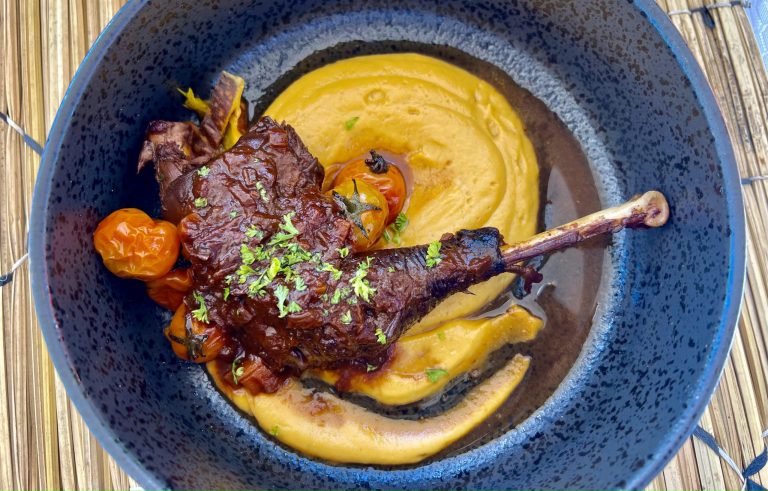 By Dr Himanshu Talwar
By Dr Himanshu Talwar
Zimbabwe, nestled in the heart of southern Africa, is a country celebrated for its warm hospitality, stunning landscapes, and rich culinary experience. The culinary landscape is a vibrant tapestry of flavours, textures and traditions, and like Zimbabwe’s landscapes – diverse, bold, and impossible to forget. With emphasis on organic, non – GMO ingredients and farm to table goodness, from the savoury flavours of traditional stews to the sweet taste of fresh fruits, every meal in Zimbabwe is a journey of discovery and delight. For Indian tourists, it’s a delicious adventure waiting to happen, offering dishes that feel like distant cousins to home-cooked favourites, yet carry a unique identity of their own.
At the core of Zimbabwean cuisine is Sadza / Isitshwala, a thick, porridge-like dish made from finely ground maize,millet or sorghum. In traditional Zimbabwean cuisine, sadza is typically enjoyed by hand. To eat it, a small portion of the sadza ball is broken off, reshaped between the fingers, and then used as a utensil to scoop up accompanying vegetables, sauce or meats. Much like rice or roti in India, Sadza forms the cornerstone of most meals, offering a neutral base that complements a variety of dishes. The most iconic pairing is Sadza ne Nyama / Isitshwala lenyama, where Sadza is served alongside a hearty meat stew mixed with chomolia kale locally known as haifiridzi, often made with beef or free-range chicken road runner (local chicken). The stew, slow-cooked with tomatoes, onions, and aromatic spices, is reminiscent of Indian curry’s comforting depth, though it tends to be milder in spice.
Zimbabwean cuisine places a strong emphasis on fresh, locally sourced ingredients. Mutakura / Inkobe, a hearty dish of boiled maize, groundnuts, and beans, is a favourite comfort food. Its earthy flavours and satisfying texture make it a close cousin to Indian Chivda or masala peanuts. Another wholesome dish is Mupunga unedovi, a rice preparation infused with peanut butter. The nutty creaminess of this dish will feel familiar to those who enjoy India’s peanut-based curries.
Zimbabwe’s indigenous roots are evident in its cuisine’s emphasis on maize and millet, staples that have been cultivated for centuries. The cuisine is a true reflection of the country’s cultural diversity and heritage, with every dish telling a story of community, love and respect for tradition.Maputi / Amaputi, a snack made from popped maize, is a delightful versatile treat that can be enjoyed at any time ofday, whether as a quick breakfast on- the- go, mid-morning- pick- me –up or afternoon treat, often enjoyed during communal gatherings. It is light, crunchy, and reminiscent of popcorn but with a distinctive maize flavour. The snack can also take the form of mhandire / a tasty peanut and maize mix seasoned with a blend of spices and creates a flavourful aromatic snack that is hard to resist.
Pumpkin leaves, or muboora / ibhobola, are another staple ingredient in traditional cooking. These leaves are sautéed with onions and tomatoes and often enhanced with a generous dollop of peanut butter. The result is a creamy, flavourful side dish that pairs beautifully with Sadza, much like the way palak paneer complements rice or bread in India.
Zimbabweans have a deep appreciation for grilled and barbecued foods, which are often prepared over open flames to infuse a smoky flavour commonly known as braai /gochigochi / ukuwosa. Gochi-gochi / ukuwosa, or grilled meat, is a popular choice. While beef, fish, chicken and boerewors (a sausage typically made from a mixture of beef, pork and spices) are common, Zimbabwean barbecues also feature game meats such as kudu, warthog, or ostrich, offering adventurous eaters a chance to savour unique flavours.
The meats are typically served with a spicy chili sauce, such as peri-peri, which adds a fiery kick reminiscent of India’s love for heat. The simplicity of the preparation allows the natural flavours of the meat to shine, making the braai menu aculinary safari that will leave any meat lover with unforgettable memories and a new found appreciation for the unique flavours of the African wilderness.
Zimbabwean cuisine wouldn’t be complete without its sweet treats and refreshing beverages. The country is blessed with an abundance of delicious and nutritious organic fruits which are perfect for desserts. In Zimbabwe’s evolving gastronomic scene, traditional organic fruits have found new life as key ingredients in modern recipes. Innovative chefs and home cooks are now incorporating these native fruits into contemporary dishes, infusing them with fresh flavours and creative twists. This blending of old and new has resulted in a vibrant, dynamic cuisine that proudly showcases Zimbabwe’s rich cultural heritage and natural bounty.
Nostalgic delights, with the Candy cake / Chikenduza, a bright pink-glazed bun, being a quintessential example is a popular dessert that evokes the charm of Indian bakery sweets. While its popularity may have peaked in bygone eras,the Candy Cake remains a staple in many Zimbabwean households. Its enduring presence is a testament to the country’s rich culinary heritage and power of food to evoke nostalgia and warmth. A particularly beloved dish is chimodho, a dense bread made from maize flour. Often served with honey or jam, it’s a simple yet delicious way to end a meal.
When it comes to beverages, Maheu / Amahewu, a tangy fermented maize drink which is enjoyed in its original unflavoured state, or infused with a variety of spices and flavourings to give it a unique twist. The flexibility to customise the flavour makes this nutritious and filling drink a favourite amongst many Zimbabweans earning its classification as both food and drink. Maheu is a refreshing option that provides a unique alternative to India’s lassi or buttermilk.
Wine can indeed elevate a meal and create a memorable dining experience. The perfect pairing of wine and food can harmonise flavours, textures and aromas, making each bite and sip even more enjoyable. The marula fruit, also known as the elephant tree due to its popularity among elephants, is native to Zimbabwe and other parts of Southern Africa. The fruit is harvested, fermented and then distilled to create the distinctive Zimbabwean Mapfura wine.
Zimbabwe’s bustling markets like Mbare Musika in Harare or Bulawayo’s City Market are perfect for sampling street food and traditional snacks. Samosas, a legacy of Indian influence in southern Africa, are a common sight, filled with spiced meat or vegetables. Another popular snack is Magwinya / Amagwinya, a fried dough bun enjoyed with a sweet topping such as syrup.
The beauty of Zimbabwean cuisine lies in its simplicity and ability to bring people together. Whether it’s a family gathering around a steaming pot of Sadza or friends sharing gochi gochi by the fire, food is at the heart of Zimbabwean life. Its cuisine promises to leave you with memories as rich and vibrant as the country itself.
Dr Talwar is an industry veteran with various articles, columns, travelogues, and write-ups published specifically on Tourism, Hospitality, Gastronomy, Golf, and Aviation to his credit


